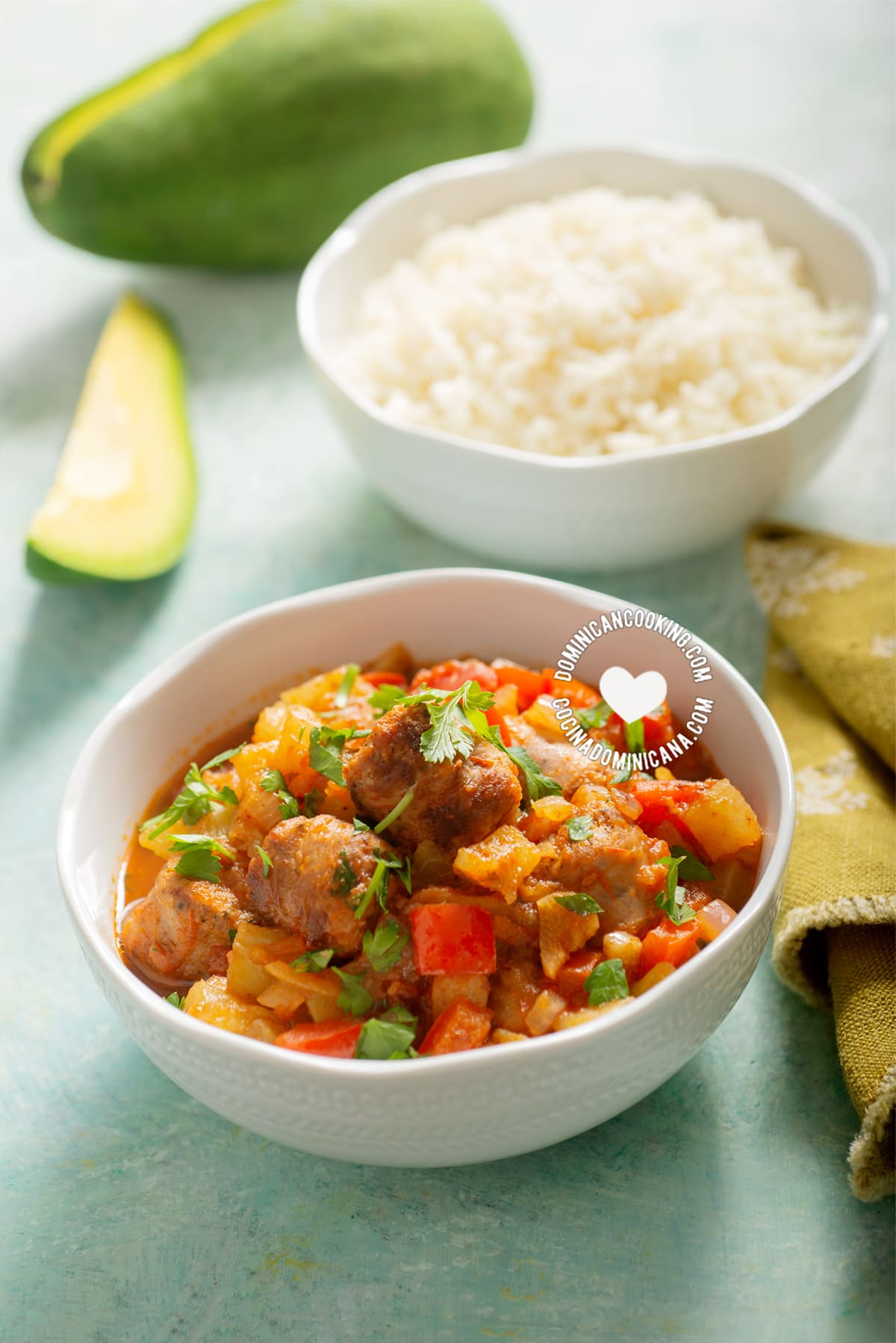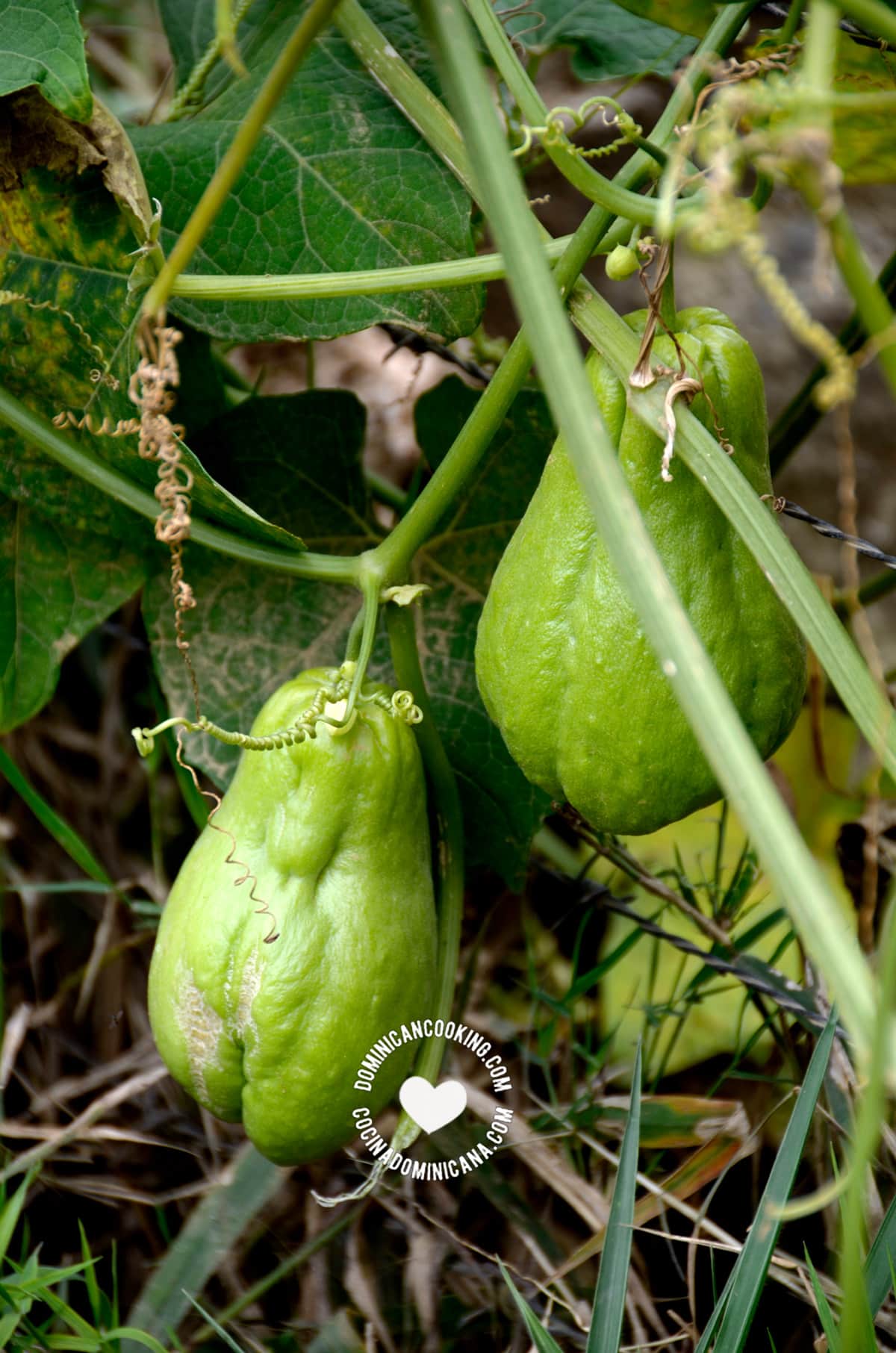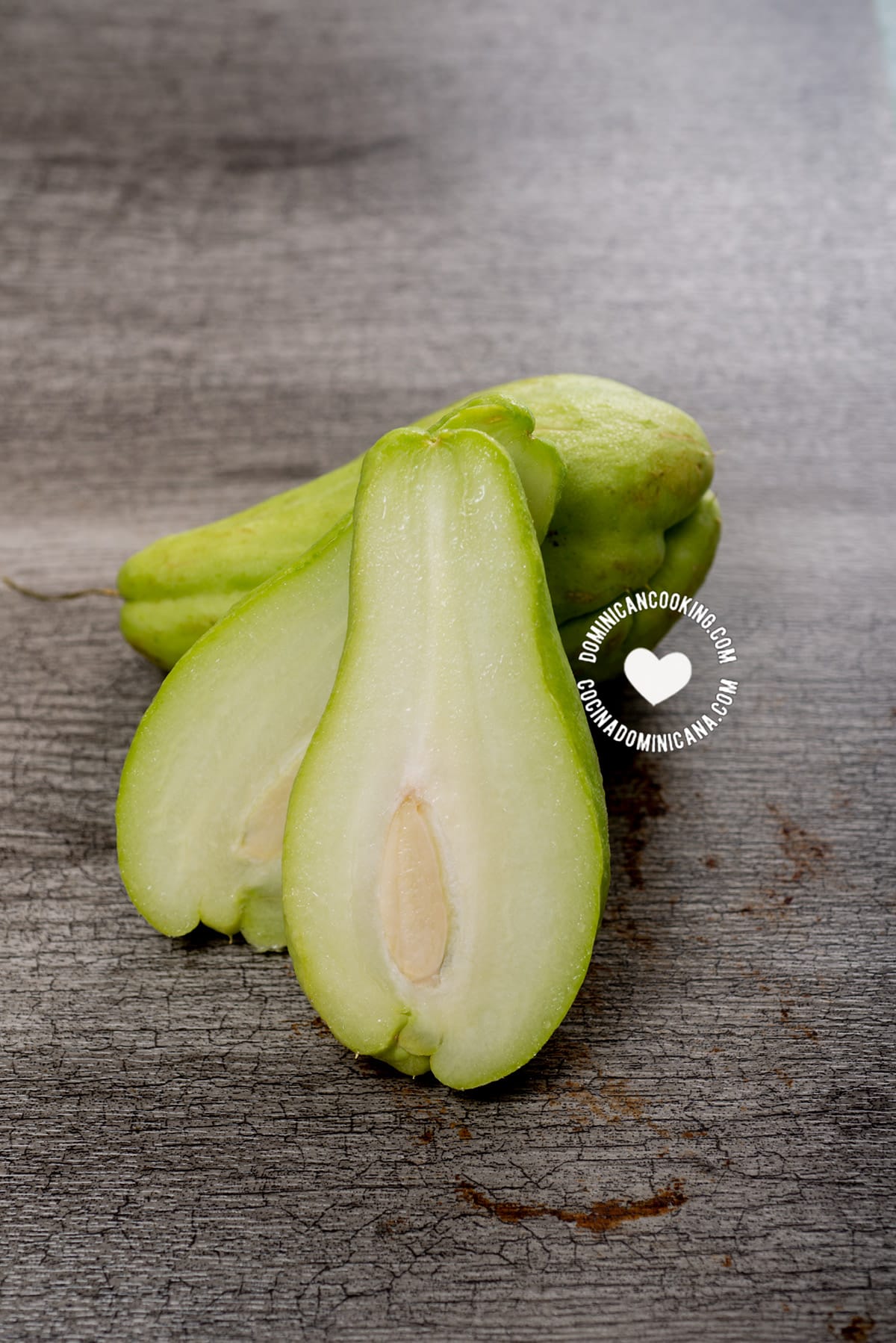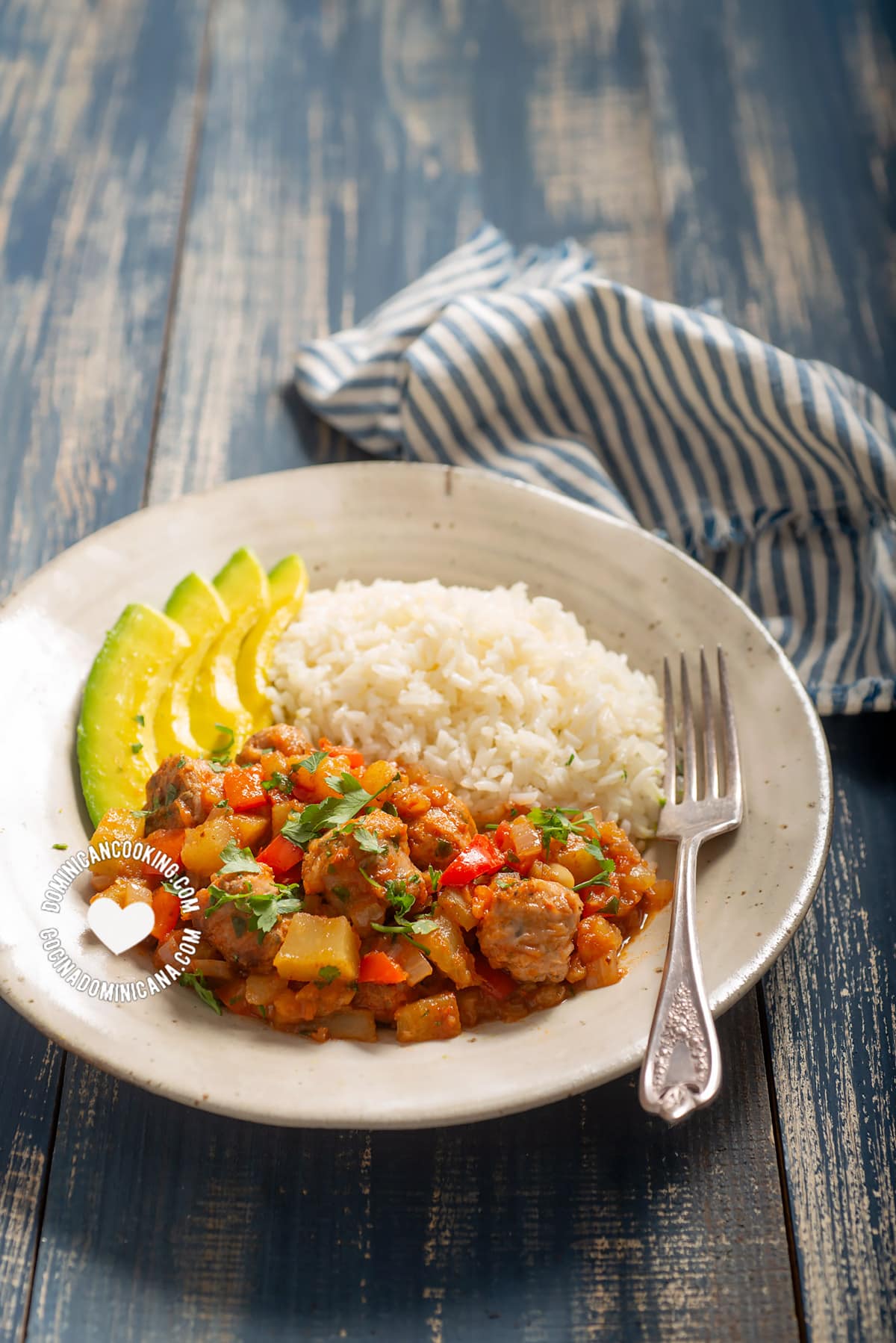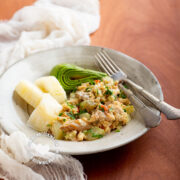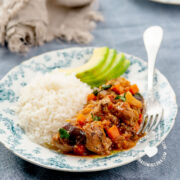Tayota guisada con longaniza (stewed chayote w. pork sausage) is a humble but flavorful Dominican dish, the delicate flavor of the tayota benefits from the strong flavor of the longaniza. It is an easy dish with complex flavors, filling, economical and comforting.
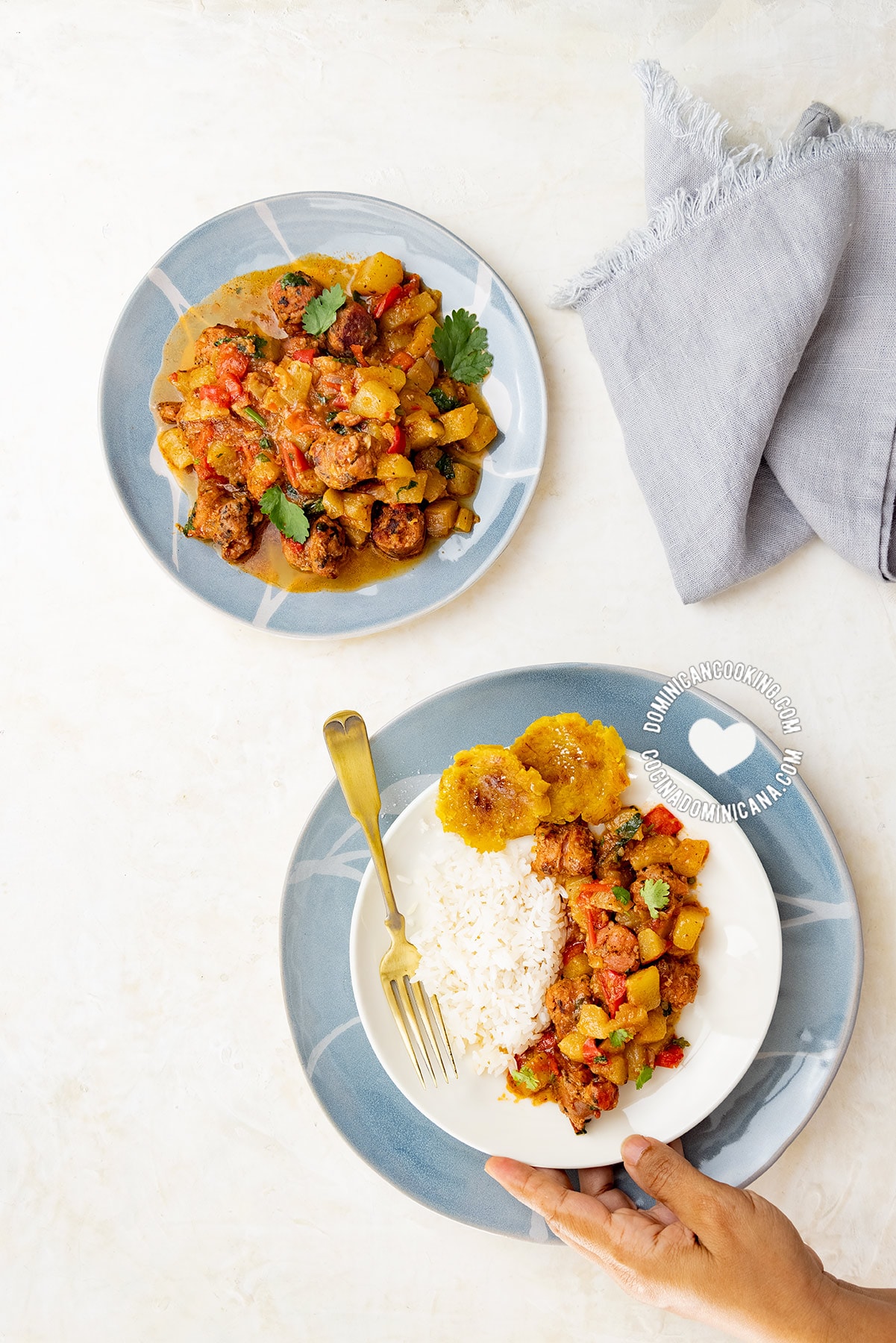
Why we ❤️ it
We should have published this tayota guisada con longaniza recipe years ago, after all, it is not only a popular dish in our country, it was a common sight on the table at my parental home, and a favorite of my mom.
Tayotas are an inexpensive and healthy vegetable, and this dish is colorful, full of flavor, and surprisingly light. But if you're not from around here you may be wondering….
What is tayota?
Yeah, I don't blame you. This isn't the world's most popular vegetable.
Tayota is the firm fruit of a vine plant with roughly the size of a pear and fairly tough skin. It has a famously mild taste, and it's used in Dominican cuisine in stews, soups, and mixed with meats or eggs.
Tayota is named christophine or christophene in English, but it's better known by its Mesoamerican name chayote. Its scientific name is Sechium edule, and in Cajun cuisine, it is known as mirliton. It originated in Mesoamerica, where it got the name chayote from the Nahuatl word chayohtli. It goes by other names in other Latin American countries, including the decidedly non-family-friendly-sounding "chocho".
How to eat it
This vegetable has a very mild taste, which gives it a somewhat bad reputation as a food (though we still eat a lot of it). While it can be eaten raw, this is not the case in our country. It is served in salads, with eggs, and as a filler in meat dishes. It is a very good source of vitamin C and minerals, and very low in calories and carbohydrates, making it an ideal choice for a healthy diet.
Serving suggestions
This rich dish with a rich sauce goes well with a moro de habichuelas rojas, or moro de guandules. It can also be served with white rice (with or without habichuelas guisadas). Some avocado slices are always welcome, and if you put some tostones on the side there'll be applause.
About this recipe
We have written before about the many ways we Dominican "stretch" our meat dishes by adding vegetables, as a way to save money, tayota is possibly one of the two most popular "fillers", the other being eggplants.
I have to say this came out very good, my mom would be proud.

Recipe
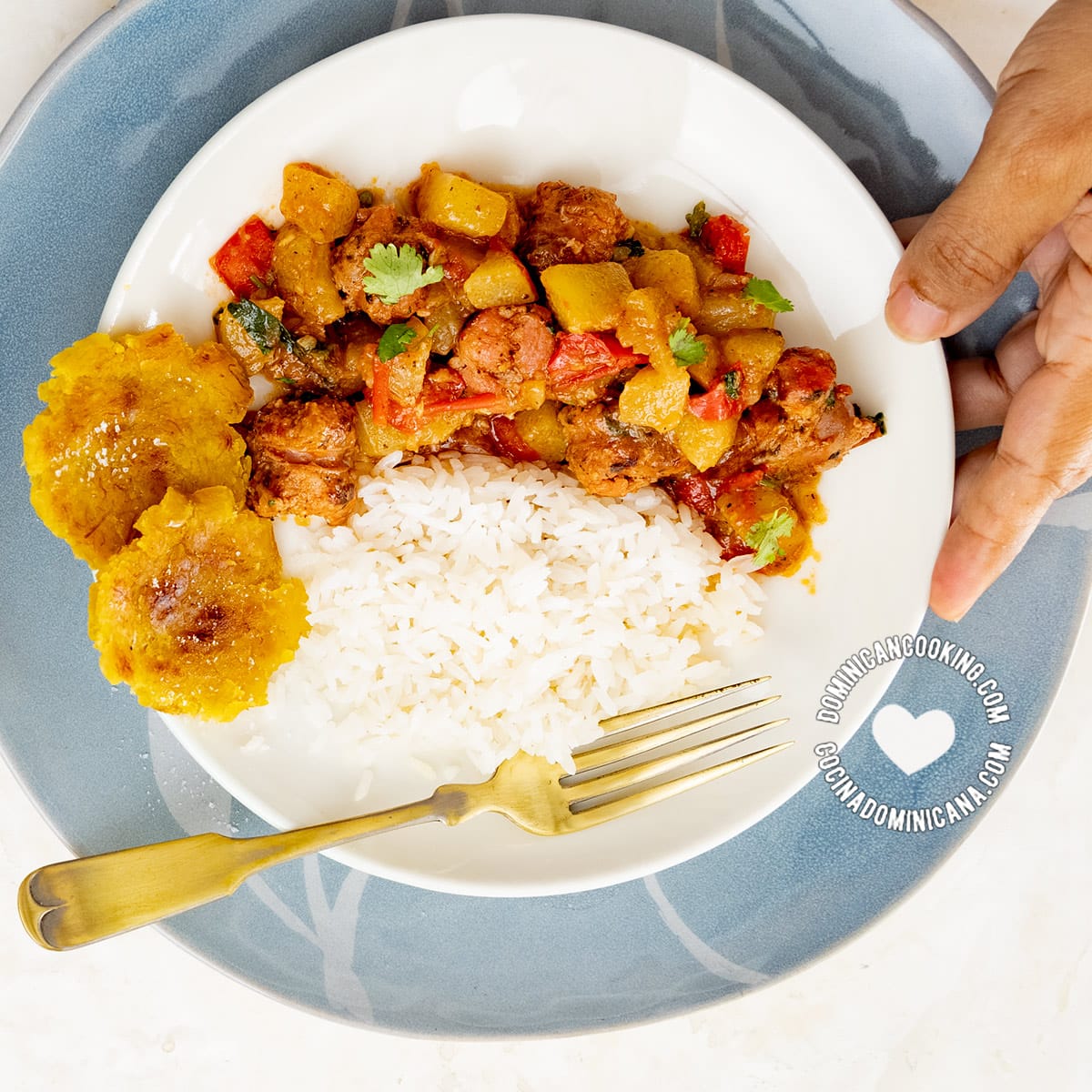
[Recipe + Video] Tayota Guisada con Longaniza (Chayote with Pork Sausage)
Ingredients
- 1 pound longaniza, (cornpepper-spiced pork sausage) [0.45 kg]
- 1 medium red onion, diced
- 4 cloves garlic, crushed
- 1 cubanela (cubanelle pepper), chopped
- 2 tayotas, (chayote), peeled, pitted and diced
- 1 cup tomato sauce
- ½ teaspoon oregano (dry, ground)
- 1 teaspoon salt, (or more, to taste)
- 2 tablespoons chopped cilantro
Instructions
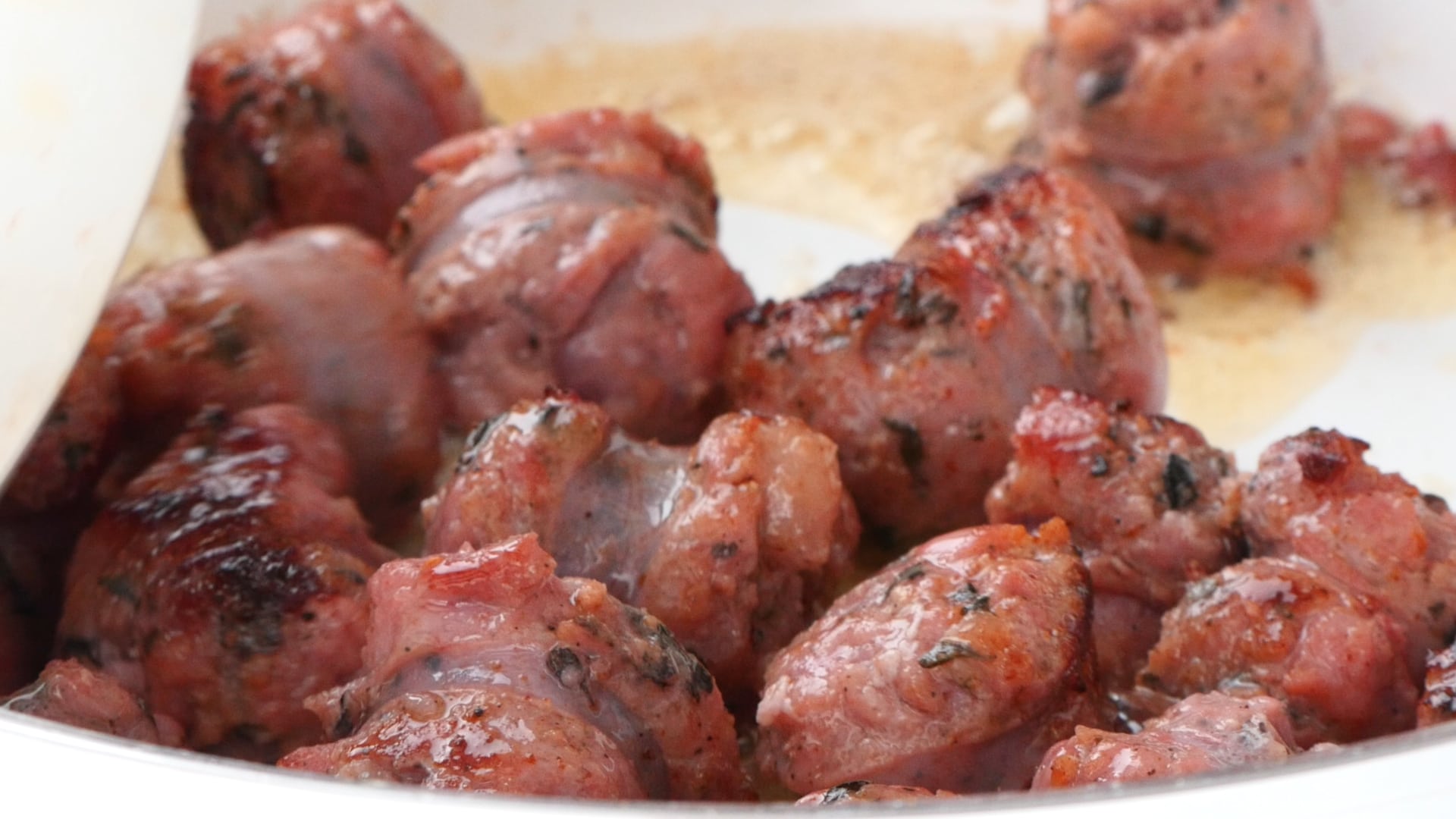 Browning the longaniza: Cut longaniza into 1" [2.5 cm]-long pieces. Heat skillet over high heat. Add the longaniza and cook, stirring often until it browns (careful with splatters!). Remove and discard excess fat if necessary but leave a couple of tablespoons for sautéing vegetables in the next step.
Browning the longaniza: Cut longaniza into 1" [2.5 cm]-long pieces. Heat skillet over high heat. Add the longaniza and cook, stirring often until it browns (careful with splatters!). Remove and discard excess fat if necessary but leave a couple of tablespoons for sautéing vegetables in the next step.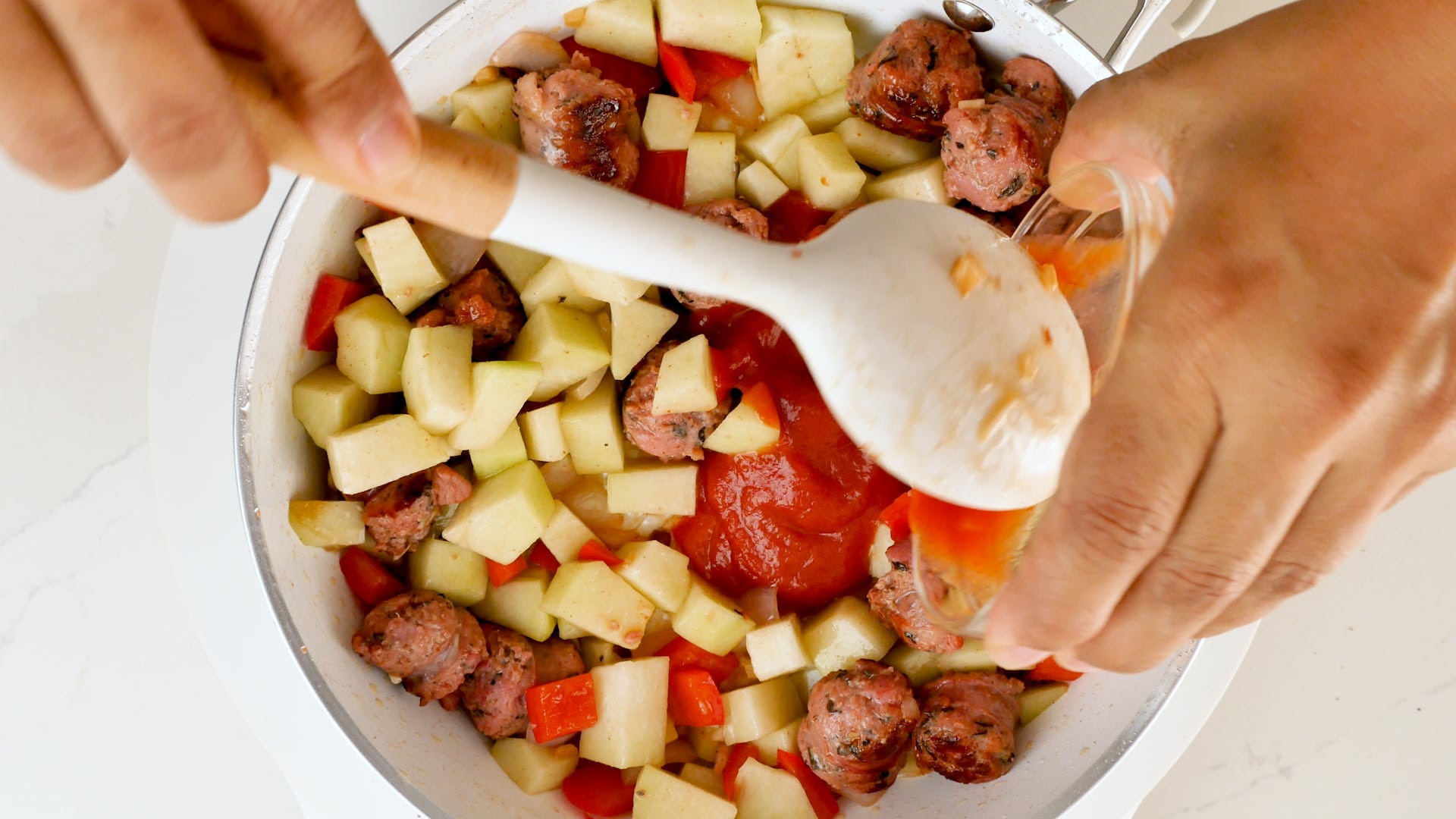 Cooking tayota: Once the longaniza is browned, lower heat to medium. Stir in onion, garlic, and bell pepper. Cook stirring for 30 seconds. Add tayota and cook stirring for another 30 seconds, lower heat if it looks like it might burn. Pour in tomato sauce and stir.
Cooking tayota: Once the longaniza is browned, lower heat to medium. Stir in onion, garlic, and bell pepper. Cook stirring for 30 seconds. Add tayota and cook stirring for another 30 seconds, lower heat if it looks like it might burn. Pour in tomato sauce and stir.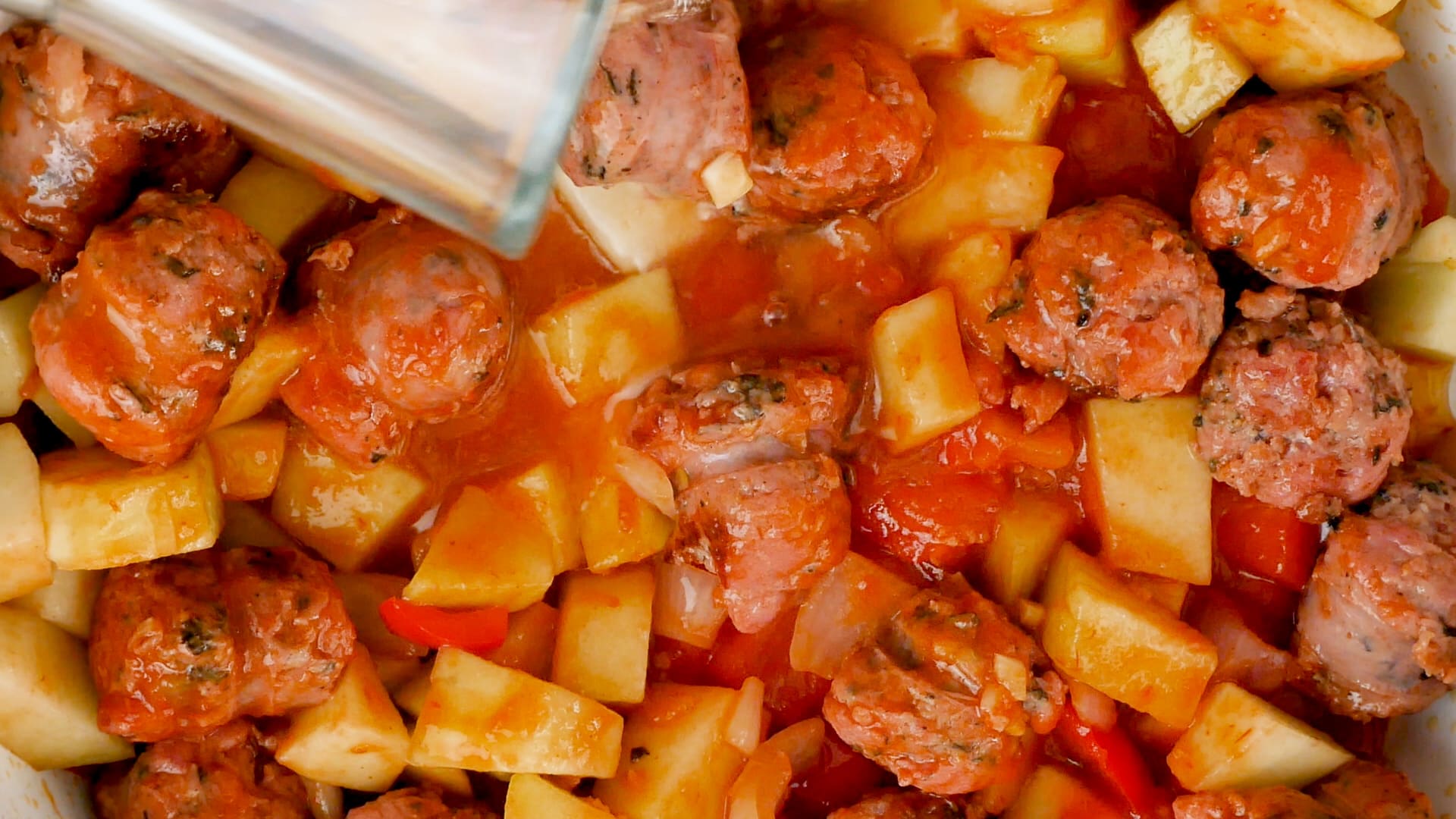 Simmering: Pour in 2½ cups [0.6 liter] of water and add oregano. Lower heat and simmer covered until the tayota is cooked through, stirring often to cook uniformly (soft, but not too mushy, it takes around 15-20 minutes). Once the tayota is cooked-through, season with salt to taste and stir in the cilantro. Remove from the heat.
Simmering: Pour in 2½ cups [0.6 liter] of water and add oregano. Lower heat and simmer covered until the tayota is cooked through, stirring often to cook uniformly (soft, but not too mushy, it takes around 15-20 minutes). Once the tayota is cooked-through, season with salt to taste and stir in the cilantro. Remove from the heat.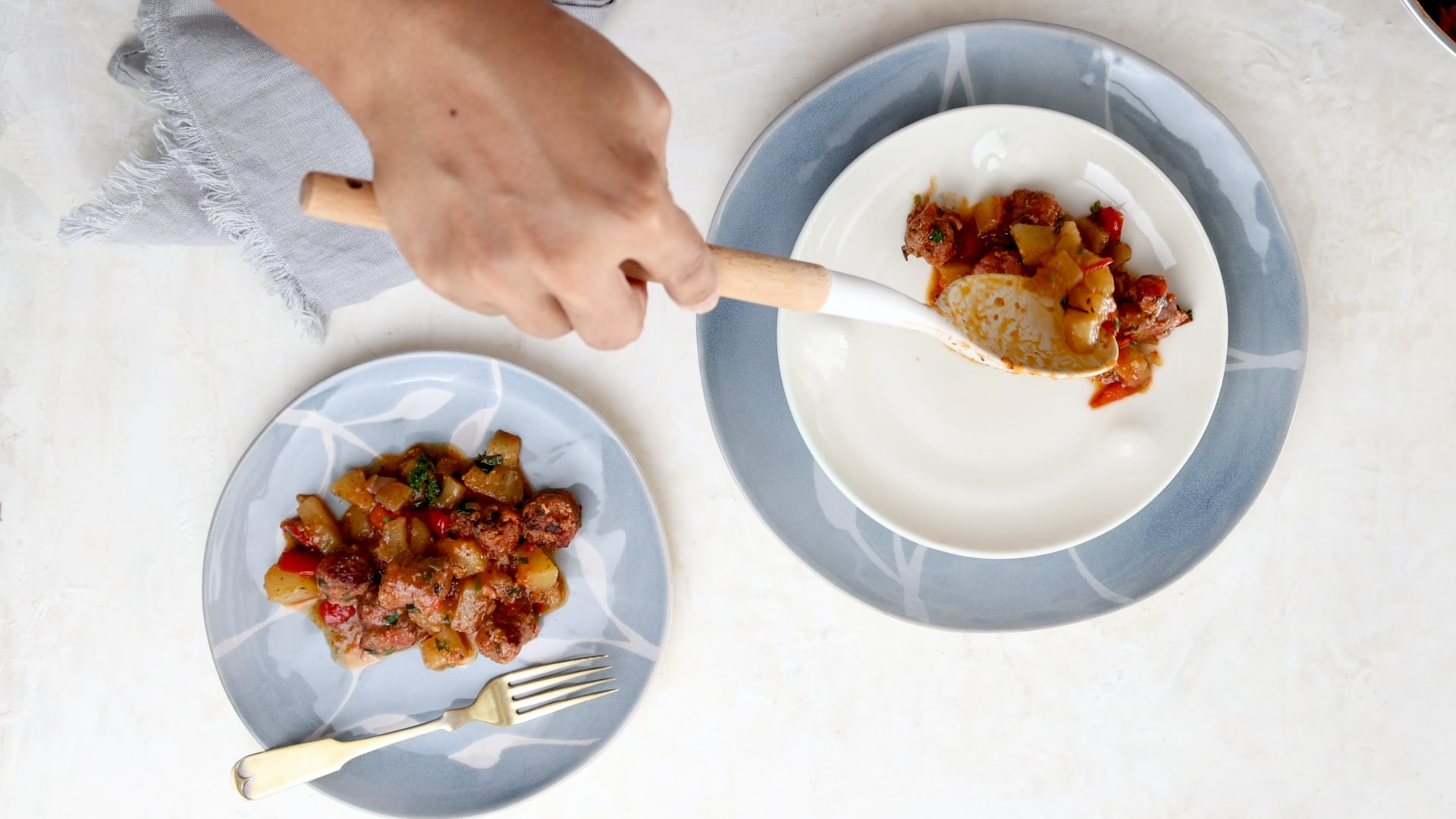 Serving: Serve hot with arroz blanco (white rice), tostones, and/or avocado.
Serving: Serve hot with arroz blanco (white rice), tostones, and/or avocado.
Video
Tips and Notes
Nutrition
Nutritional information is calculated automatically based on ingredients listed. Please consult your doctor if you need precise nutritional information.
Published Jul 23, 2016


